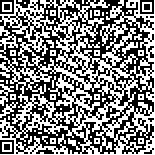| 摘要: |
| [摘要] 运动想象(motor imagery,MI)与物理治疗相结合可以改善脑卒中后患者肢体功能。MI简便易行,能充分调动患者积极主动参与康复训练,现已逐步应用到临床实践中。该文就MI的脑机制及其在脑卒中患者运动功能康复中的应用进行综述。 |
| 关键词: 运动想象 脑卒中 康复 植入型运动想象 |
| DOI:10.3969/j.issn.1674-3806.2014.01.33 |
| 分类号:R 49 |
| 基金项目:广西卫生厅科研课题(编号:Z2012307) |
|
| Brain mechanisms of motor imagery and its application in motor rehabilitation in patients with stroke |
|
CAO Wan, CHEN Qi-bo
|
|
Department of Rehabilitation Medicine, the People′s Hospital of Guangxi Zhuang Autonomous Region, Nanning 530021, China
|
| Abstract: |
| [Abstract] Motor imagery(MI) combined with physiotherapy can offer functional benefits after stroke. Due to the simple, MI can fully mobilize the patients to actively participate in rehabilitation training, and is gradually applied to clinical practice. This paper briefly reviewed the brain mechanisms of motor imagery and its application in motor rehabilitation in patients with stroke. |
| Key words: Motor imagery(MI) Stroke Rehabilitation Embeded motor imagery |

